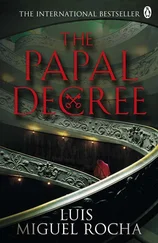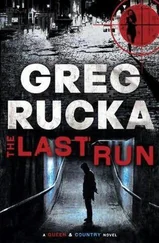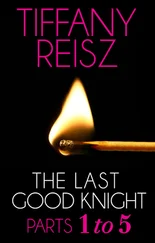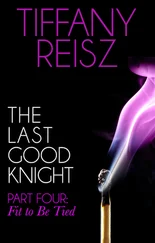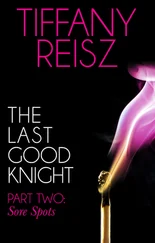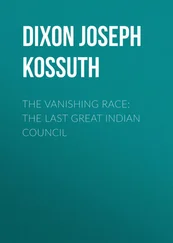Many thought that Paul Marcinkus, the old archbishop of Chicago, had been too isolated from the world in a remote parish in Illinois, and though he in fact had stepped aside, he had never intended to give up his power, and still remained in the service of the Catholic Church, in the diocese of Phoenix.
But the Sun City was very far from the center of the world, very far from Rome, and very far from God. Ever since the Italian judges charged him with the Banco Ambrosiano embezzlement, he couldn’t shed the anguish this had caused him, and that, in turn, had weakened his heart. He was afraid his old friends suspected him of having ratted them out to the police and the court, because vengeance could be extreme.
With his gaze fixed on the whiteness of the ceiling, Marcinkus could see himself as one of the Four Horsemen of the Apocalypse: Calvi, Sindona, Gelli, and himself, sent by God to put the world in order.
Marcinkus remembered Roberto Calvi’s horrible fate. He himself had barely managed to stay solvent after the bankruptcy of Banco Ambrosiano. And this depended on bribes and blackmail.
“What was that woman’s name?” Marcinkus asked himself out loud.
Graziella Corrocher was her name, and she was the one who had informed on Calvi before jumping out the window of her office and smashing herself on the pavement.
When the Milan judges sent him to the Lodi jail, he told them more than he should have: “The Banco Ambrosiano isn’t mine. I’m only in someone else’s service. I can’t tell you any more.” Friends don’t forgive indiscretions, and if Calvi was able to gain conditional freedom, it was only by betraying family and friends.
Hounded and desperate, Calvi fled from Italy and hid in various locations until he was found. Unfortunately the Mafia got to him before the police did. It was probably Gelli’s men or Sindona’s. On June 18, 1982, they put some bricks and $15,000 for services rendered in his pockets. Then they tied a rope around his neck and dropped him under the Blackfriars Bridge in London. The police reported that poor Roberto had committed suicide.
Morons! You don’t understand anything! Marcinkus thought. Poor Roberto.
In contrast, Michele Sindona got what he deserved. The old man used to be proud of his deals, but he was incapable of keeping a bank going. The Franklin Bank collapsed, and he lost his project with the Banca Privata Italiana to the Genovese family. He said he had studied law, but his beginnings were rooted in the fruit business, hence his nickname, the Lemon Man. At the time, he asked the Sicilians for help, and thanks to them he prospered. He went around-oh, so stupidly-bragging that he controlled the Milan stock market. In the United States he made an alliance with the Inzerillos and the Gambinos, who were even bigger scoundrels than the Genovese. With their help, he managed to get rich and to make deals with the Holy See, that is, with Marcinkus and Calvi. “Only an idiot could have people call him Master of the Universe,” Marcinkus had once said. In the midsixties, when his finances and those of the Vatican collapsed, Sindona asked Calvi for help, but by then Sindona couldn’t do much. Sindona felt besieged both in the United States and in Italy, where the charges and accusations against him were endless. So he put pressure on Calvi to save his empire with Banco Ambrosiano funds, but this Catholic bank and its holding company were already under the scrutiny of the judicial authorities. Marcinkus and Calvi claimed they didn’t know the Sicilian, and abandoned him to his own luck. In a desperate attempt to avoid jail, Sindona ordered the murder of a Milanese judge who presided over the cases connected with their dirty dealings, but this last stupidity only served to add one more crime to his long list. He was arrested in the United States, and the Italian government asked for his extradition. Sindona had made few friends but incurred many debts along the way, and he paid for them all on March 23, 1986.
“Would you like hemlock with your coffee, Michele?” Marcinkus asked sarcastically in the solitude of his bedroom, attempting to smile for the last time.
Jail isn’t a good refuge for those with a lot of outstanding debt. So Michele Sindona ended his days with the taste of hemlock in his throat.
As for the boss of the P2, Marcinkus couldn’t help but feel pity. Licio Gelli had more fantasies than brains, and as much taste for conspiracies as for money. Only a poor devil could think of making a list of the names and professions of all his sympathizers, Marcinkus thought. In 1981 the list of Masons came to light. The old archbishop of Chicago smiled, thinking of Silvio Berlusconi as prime minister of Italy. When the house of cards collapsed, the Masons threw Gelli out, and the Italian judges accused him of acquiring and revealing state secrets, of slander against the judges writing the summary of his charges of conspiracy, and of fraudulent bankruptcy. Gelli spent the last years of his life between courts and jails. The old politician served his home detention at his villa in Arezzo, waiting for death. The poor devil had hundreds of gold ingots hidden in flowerpots, and they were discovered. How many months of life still lay ahead for him?
“Time runs out for everyone, old Gelli.” Marcinkus sighed.
There was no more time to reveal secrets or give explanations.
Everything had come to an end.
Sarah often thought she would never again lead a normal life. But it hadn’t turned out that way. Now she stood in Saint Peter’s Square, on a day like any other, attending Sunday Mass said by Pope Benedict XVI. Her parents, Raul and Elizabeth, accompanied her. Three months had gone by since she had gotten rid of J.C. and his agents. Her father had totally recovered from the wounds inflicted on him in New York.
Sarah had gone through so much in order to get to this peaceful Sunday morning. She couldn’t stop her thoughts from wandering to the chain of events leading to that day. She still had some doubts. Why was Valdemar Firenzi searching for those documents? Had he been hunting for a long time, or was it the opening of the trial that drove him to start the search? The eventual discovery of his body in the Tiber River in Rome only confirmed her worst fears, leaving those questions unanswered.
Sarah had a much clearer picture of other parts of the story. The night that poor John Paul I had been killed, the accomplices of his executioner hid the documents the pontiff was holding in his hands, and later gave them to the man she knew as J.C. After the conclave that elected John Paul II, he managed to introduce the documents into the Vatican Secret Archives. Monsignor Firenzi found the new papal dispositions and the third secret, and, aware of their tremendous value, he entrusted them to his friend Father Marius Ferris.
The orders were quite clear: save them and wait. Ferris sent him the key to the locker where he had hidden the papers, but things got even more complicated. Firenzi, who was beginning to sense that someone was following him, ordered two double portraits with the fixed image of Benedict XVI, and behind it, that of Marius Ferris, which would appear when black light was aimed at the photo. And he sent them to his most trusted men, Felipe Aragón in Madrid and Pablo Rincón in Buenos Aires.
To the average person, they would look like the images of the pope and of an unknown old man, but those two men knew Marius Ferris. Firenzi knew that he needed to say no more. They could contact his friend in New York, who was authorized to reveal the secret location of the documents. There were three men in on the secret. Firenzi’s plan was a good one, because when the men from the P2 started chasing the papers, there was a vital time lapse before they could gather all the necessary clues.
Читать дальше



